THE WHOLE-BODY JUMP SHOTS
THE BIG MUSCLES ARE THE BIG STORY
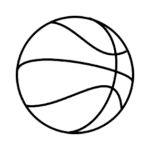
By Robert Tilitz
The whole-body jump shot theory is based on the best jump shots, the five best jump shots in terms of athleticism, power, accuracy, touch, protection and gun-turret adjustability to be more specific. The whole-body jump shot theory asserts that the five best jump shots were built on outwardly different but fundamentally similar techniques.. The shared fundamentals are forward rotation of the shooting shoulder during the release and complementary coordination of the body’s big-muscle units. The whole-body jump shot theory was so named because of the physicality of the selected jump shots.
Of the five different whole-body jump shots, two are full-fledged because of their more advanced shooting-shoulder and big-muscle-unit fundamentals. One is the whole-body elbow-out jump shot, which specializes in strongside forward and moderately angled strongside lateral pull-ups. The other is the whole-body reachback jump shot, which specializes in strongside lateral pull-ups at moderate and extreme angles. Their technical superiority translates into more athleticism and more power.
The two most popular whole-body jump shots in terms of usage are the whole-body reachup jump shot and the whole-body elevated-elbow-in jump shot. They are not the most popular because they outperform the whole-body elbow-out and whole-body reachback jump shots. They don't, so that's not the reason for their higher usage rate.
Instead, the thinking here is that the higher usage rates of the whole-body reachup and the whole-body elevated-elbow-in jump shots occur because their form is fairly close to the failed but widely taught elbow-in-strokesnap jump shot, from which they could have evolved. In particular, there are early setup and later shooting stance similarities.
Stephen Curry’s sidegrip jump shot, which is different from all of the many other sidegrip jump shots in the NBA past and present, is the fifth type of whole-body jump shot. Curry’s sidegrip jump shot qualifies as a full-fledged whole-body jump shot, but one that is uniquely adapted to off-the-dribble, attack-capable pull-up jumpshooting at long-range. In fact, the view here is that the one-of-a-kind whole-body jump shot that Curry built around his sidegrip is a big reason why he has become without a doubt the greatest long-range jumpshooter in the history of basketball. On the downside, the same technical adaptations that serve Curry’s whole-body sidegrip jump shot so well at long-range also limit its attack capability at mid-range.
In a game changer, the whole-body jump shot theory could provide the means to achieve widespread jump shot competence. That’s partly because the whole-body jump theory’s detailed explanations of how and why the whole-body jump shots work so well are conducive to teaching and to learning. But it’s mostly because the whole-body jump shot theory’s big-muscle jump shot techniques are easy to teach, easy to learn and easy to execute.
Whole-Body Primer - Push and Pull and a Pictorial Preview
Basketball’s prevailing elbow-in-strokesnap jump shot theory limits the athleticism and the power of the players. The whole-body jump shot theory, on the other hand, is built on athleticism and power. Given the contrast, it makes sense that the whole-body theory would develop its own entirely new and different jump shot techniques. Take for example the dynamics of the release for the two primary whole-body jump shots: the elbow-out and the reachback. The release of the whole-body elbow-out jump shot is at its core a push. And the release of the whole-body reachback jump shot is at its core a pull. But to elbow-in-strokesnap traditionalists, push is a dirty word and pull is an unknown concept. Be that as it may, push and pull work very well as direct sources of whole-body release power that merges with and helps shape whole-body jump shot athleticism.
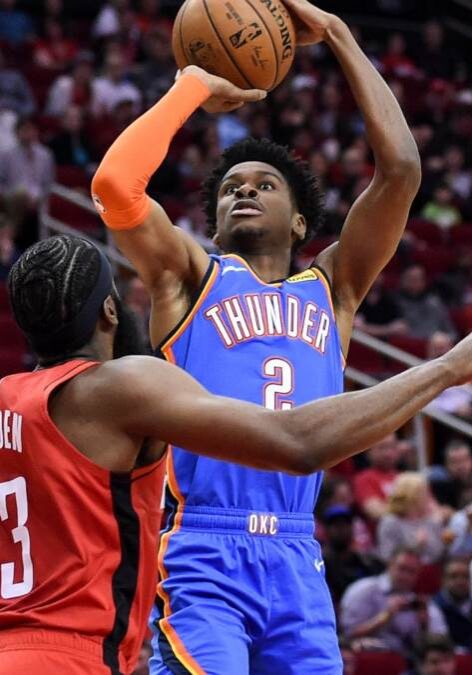
Shai Gilgeous-Alexander
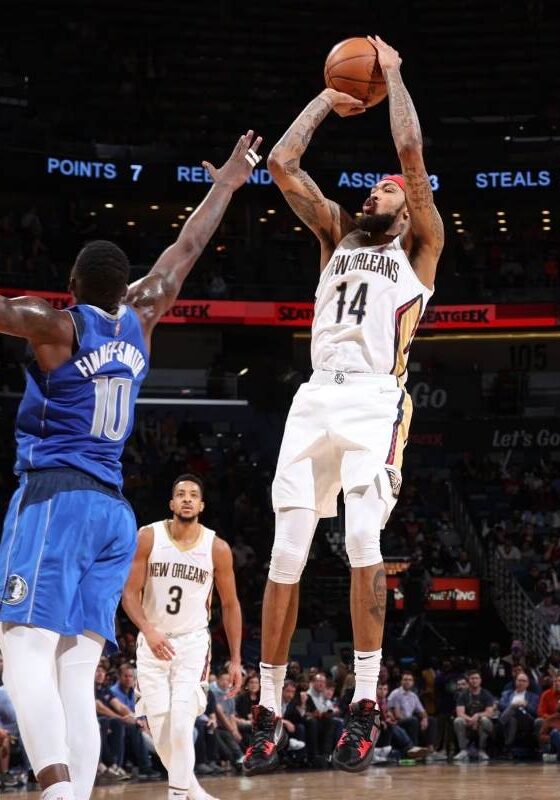
Brandon Ingram
The Whole-Body Elbow-Out Jump Shot - Strongside Forward and Moderately Angled Strongside Lateral Capabilities
The whole-body elbow-out jump shot is the star of the whole-body jump shot theory. Although the whole-body elbow-out jump shot absolutely excels in the athleticism, power and shotmaking departments, its whole-body star status actually derives from its strongside forward and moderately angled strongside lateral pull-up capabilities. That's because they open up huge usage and crucial tactical possibilities. In terms of usage, the strongside forward and moderately angled strongside lateral pull-up capabilities are a perfect match for the to-the-basket game favored by most players. In terms of tactics, the strongside forward and moderately angled strongside lateral pull-up capabilities provide access to and spearhead the attacking strongside game, which features a full complement of shooting, driving and passing options.
The following is a list of notable whole-body elbow-out jumpshooters: Lou Hudson, Earl Monroe, Bob McAdoo, David Thompson, Robert Parish, Bernard King, Hakeem Olajuwon, Karl Malone, Reggie Miller, Sheryl Swoopes, Shai Gilgeous-Alexander and Ja Morant. Many did/do not completely conform to the whole-body model. For example, Reggie Miller shot a fingertips/pads-controlled no-spin whole-body elbow-out jump shot, not the standard brushing-hand-action-controlled big-backspin whole-body model. But sport is never about cookie-cutter replication, right? Most importantly, all of the listed individualized whole-body elbow-out jumpshooters feature whole-body athleticism and whole-body power.
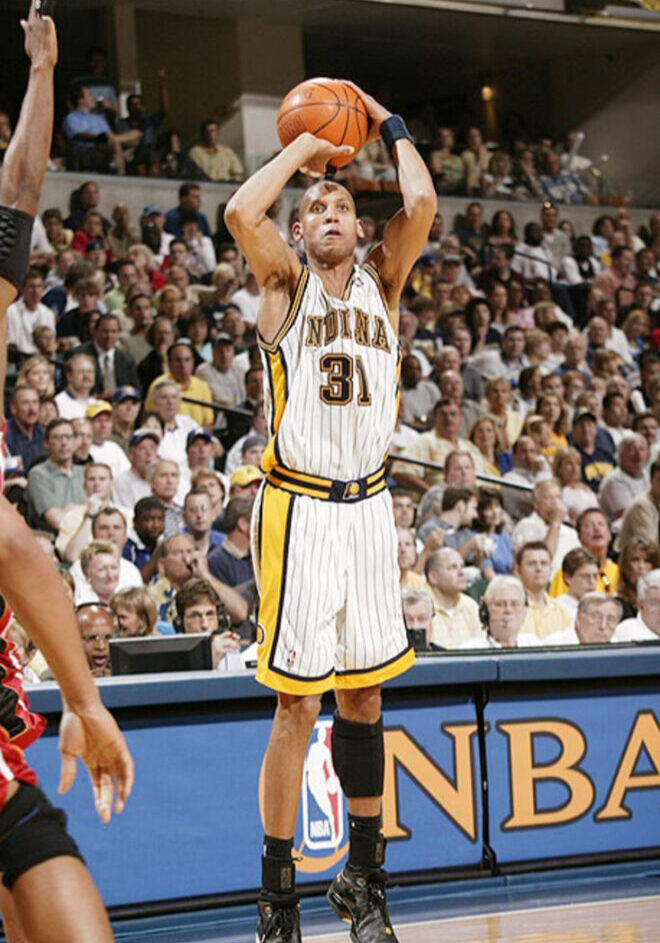
Reggie Miller
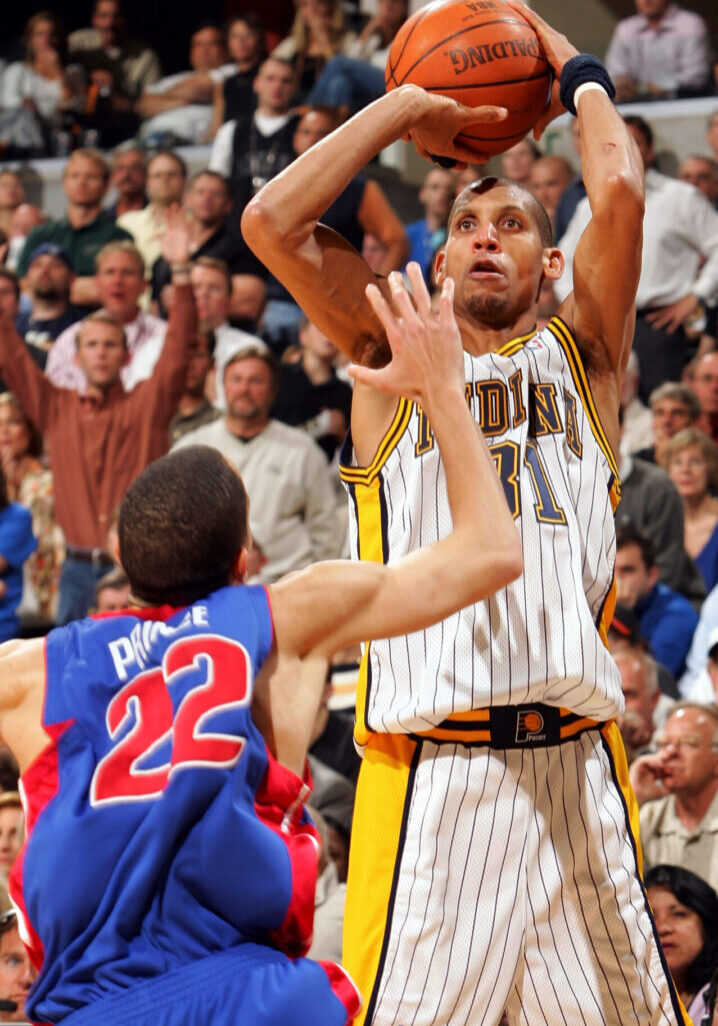
Reggie Miller
The Whole-Body Reachback Jump Shot - Strongside Lateral Capability at Both Moderate and Extreme Angles
The whole-body reachback jump shot excels at creating separation from the defender off strongside lateral moves and run-ups. The reachback to set up the shooting position for the start of the release and the resulting fallaway jump reliably create separation from the defender. Because defenses tend to pack the middle at the end of close games, the laterally-oriented/around-the-defense whole-body reachback jump shot is often the #1 crunchtime weapon. Despite its sometimes acrobatic fallaway athleticism, the whole-body strongside reachback jump shot is relatively easy to learn and to shoot, provided the whole-body jump shot theory's big-muscle techniques underlie instruction and execution.
The following is a list of notable whole-body reachback jumpshooters: Jerry West, Bobby Dandridge, Larry Bird, Kevin McHale, Michael Jordan, Kevin Garnett, Kobe Bryant, Tracy McGrady, Michael Redd, DeMar DeRozan, Brandon Ingram and Devin Vassell. Many did/do not completely conform to the whole-body reachback model. For example, DeMar DeRozan does not exploit the whole-body reachback's technical strengths, neither building his otherwise excellent mid-range game around the reachback's strongside lateral fallaway pull-up specialty nor building his microscopic 3-point presence up with the easy power of reachback standing-start/stationary semi-jump shots. But sport is never about cookie-cutter replication, right? Most importantly, all of the listed individualized whole-body reachback jumpshooters feature whole-body athleticism and whole-body power.
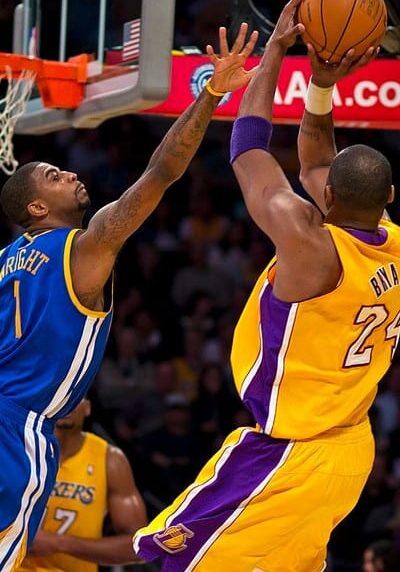
Kobe Bryant
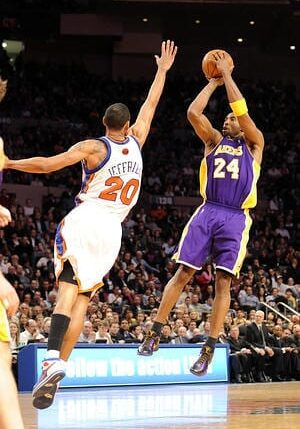
Kobe Bryant
The Reachup Jump Shot - The Less Reachback, the Better
Alex English showed the strengths and weaknesses of the reachup jump shot. English dominated with the fully extended reachup jump shot from shallow mid-range. But English was much less effective with the reachup jump shot beyond shallow mid-range. Klay Thompson is one of the few to successfully expand the range of the reachup jump shot to long-range. Thompson’s secret is whole-body supplementary power production techniques. Kawhi Leonard occupies the middle ground between English and Thompson, which is mid-range. Leonard uses his big mitts to maximize the power of the reachup jump shot’s heavy-on-hand-action release. The heavy backspin of Leonard’s reachup jump shot confirms that his reachup release is heavy on hand action.
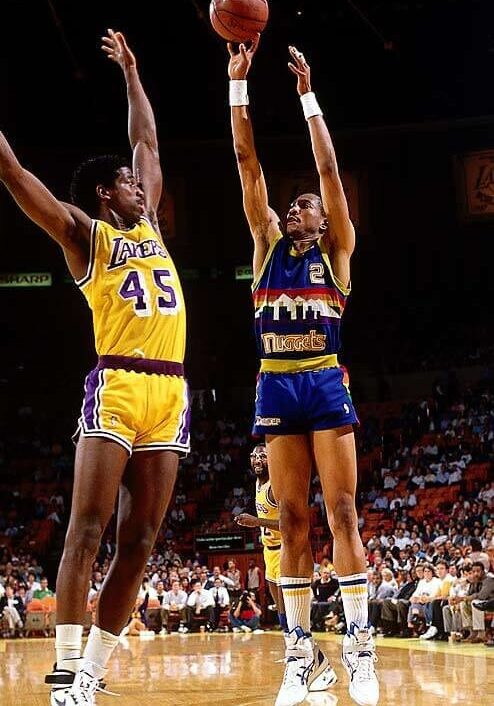
Alex English
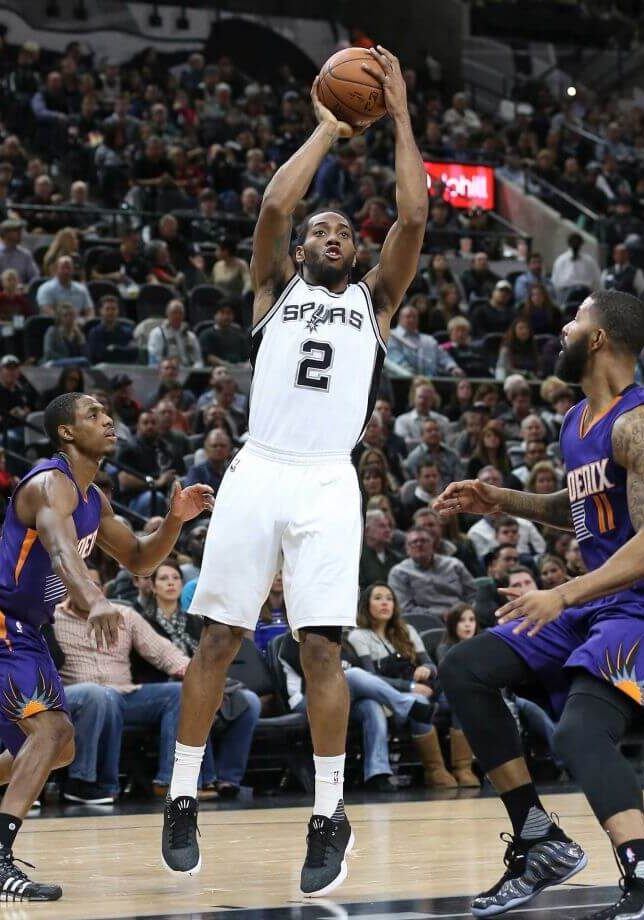
Kawhi Leonard
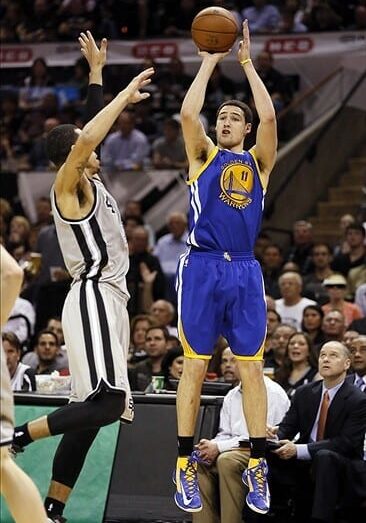
Klay Thompson
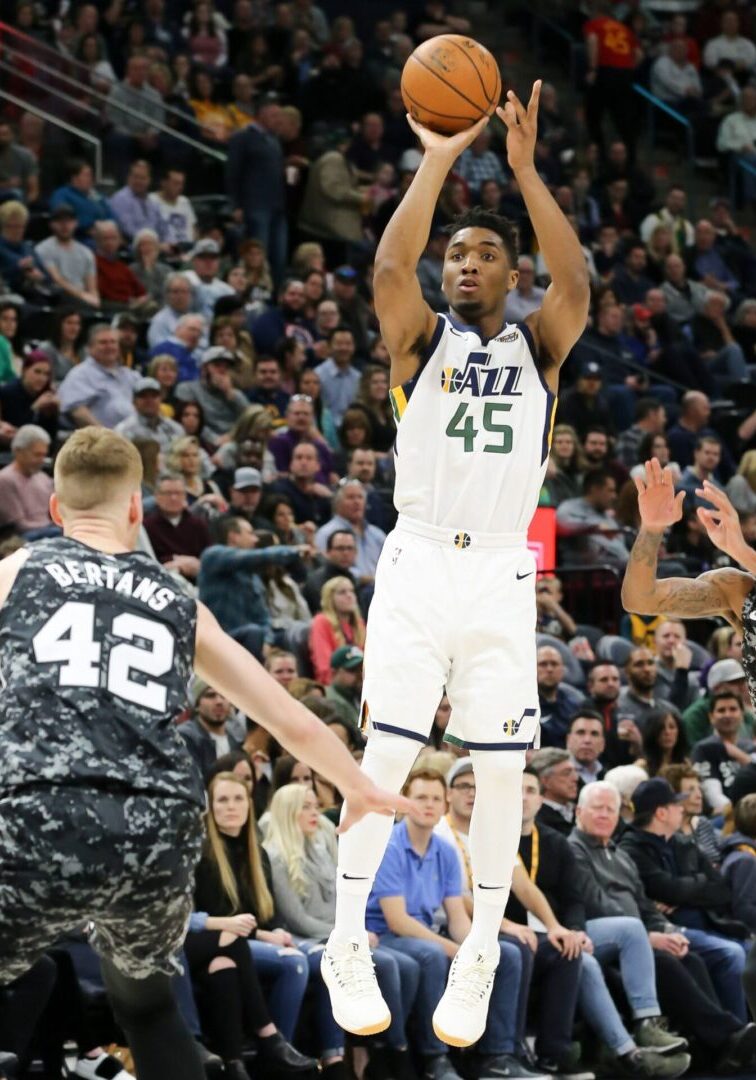
The Elevated-Elbow-In Jump Shot - Small Change, Big Improvement
Elevated-elbow-in jumpshooters, such as Kevin Durant, set up the shooting position for the start of the release over the front of the head with a mini reachback. The over-the-front-of-the-head shooting position is high enough and far enough back for the shooting shoulder to roll back to activate as a source of whole-body athleticism and whole-body power by way of engagement with the release mechanism. Those shooting-shoulder-centric techniques define the elevated-elbow-in jump shot as a whole-body jump shot. The elevated-elbow-in jump shot’s over-the-front-of-the-head shooting position is also high enough for the arm action that raises the basketball to the shooting position to double as a significant supplementary power source for the jump of the jump shot.
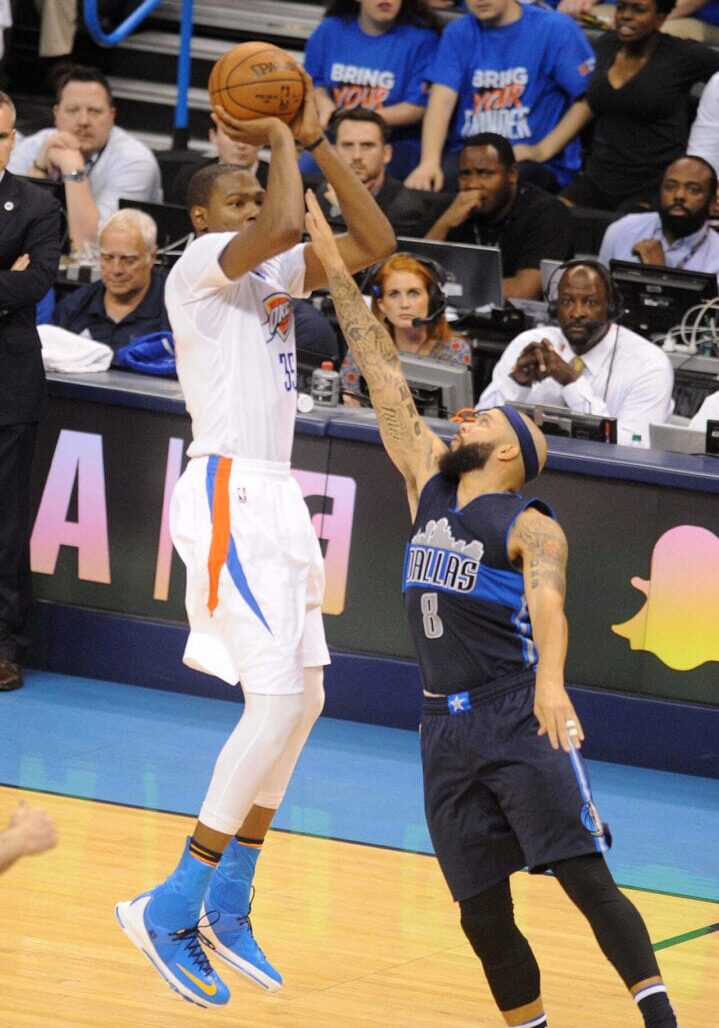
Kevin Durant
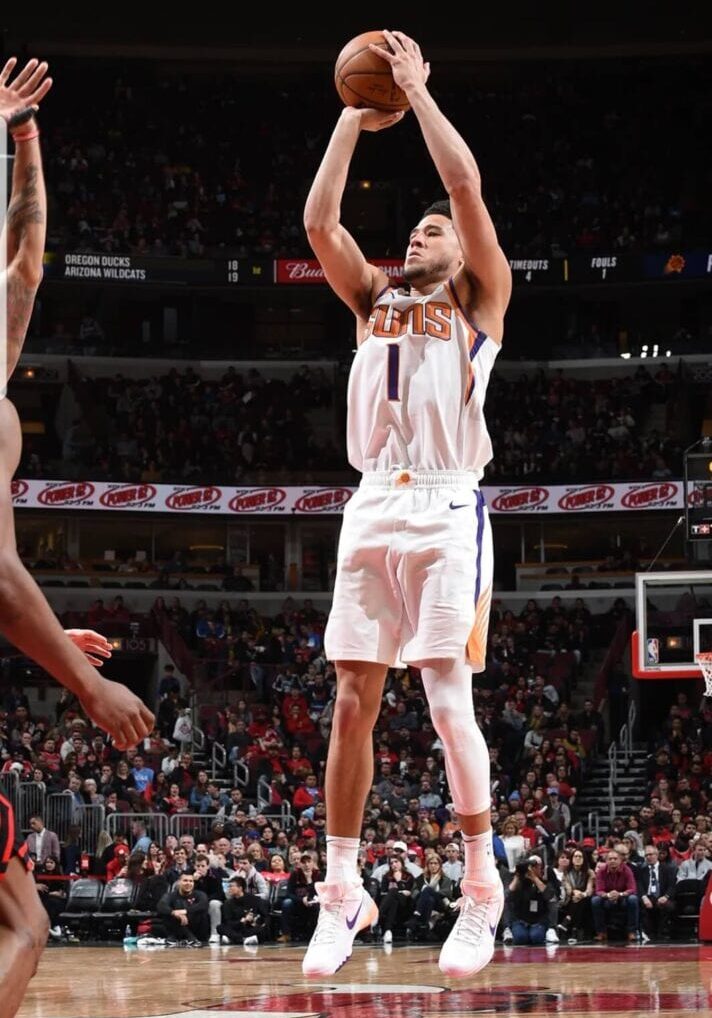
Devin Booker
Stephen Curry’s Sidegrip Jump Shot - Max Power, Max Control
Stephen Curry brings much more athleticism and much more excitement to 3-point shooting than any other player. Some of the other great 3-point shooters may be comparable to Curry in terms of power, accuracy and touch from long-range. But nobody can come close to matching Curry’s ability to combine attacking off-the-dribble athleticism with 3-point shooting, which is something that Curry does all the time. So not only does Curry attack with the 3-poiny shot much better than any other player, Curry also attacks with the 3-point shot much more frequently than any other player. That’s why nobody but Curry regularly brings fans out of their seats and onto their feet with dynamic 3-point pull-up jumpshooting. However, the low start and the low finish of his release and the resulting low jump of his jump shot prevent Curry from dominating and attacking with his sidegrip jump shot at mid-range the way he does at long-range.
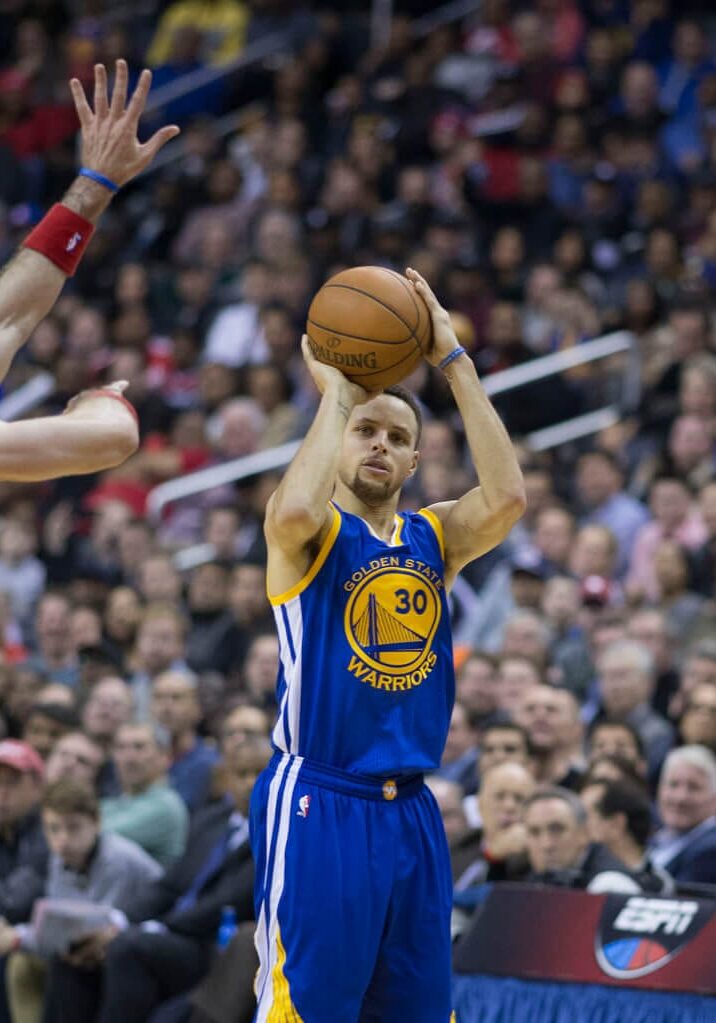
Stephen Curry
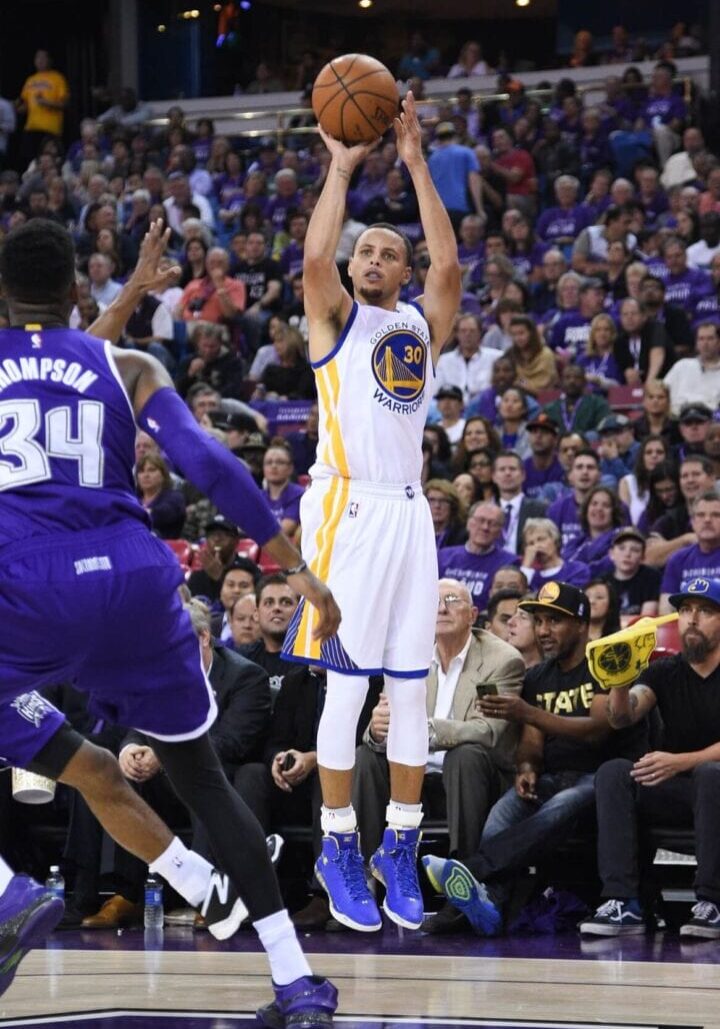
Stephen Curry
Kyrie Irving - Jump Shot Diversity
Most NBA players shoot just one type of jump shot, often not very well. But Kyrie Irving has mastered two different whole-body jump shots. One is the whole-body reachup jump shot. The other is the whole-body reachback jump shot. Both of Irving’s whole-body jump shots are attack jump shots. But because each of Irving’s whole-body jump shots attacks the defense in a different way, each enhances the effectiveness of the other by diminishing the ability of the defense to concentrate on either one. Irving’s selective use of his whole-body jump shots is the foremost example of jump shot diversity, which he used to determine the outcome of the 2016 NBA Finals. Clearly, Irving’s jump shot diversity is an extremely potent complementary skillset, which keeps the defense back on its heels and at his mercy. Despite heaping worshipful praise on Irving’s circa 2016 jump shot diversity, the article here concludes on a down note. That’s because sometime post-Championship Irving phased out his whole-body reachup jump shot and replaced it with a less attack-capable jump shot. For Irving to restore his jump shot-derived dominance, the replacement needs to be reversed.
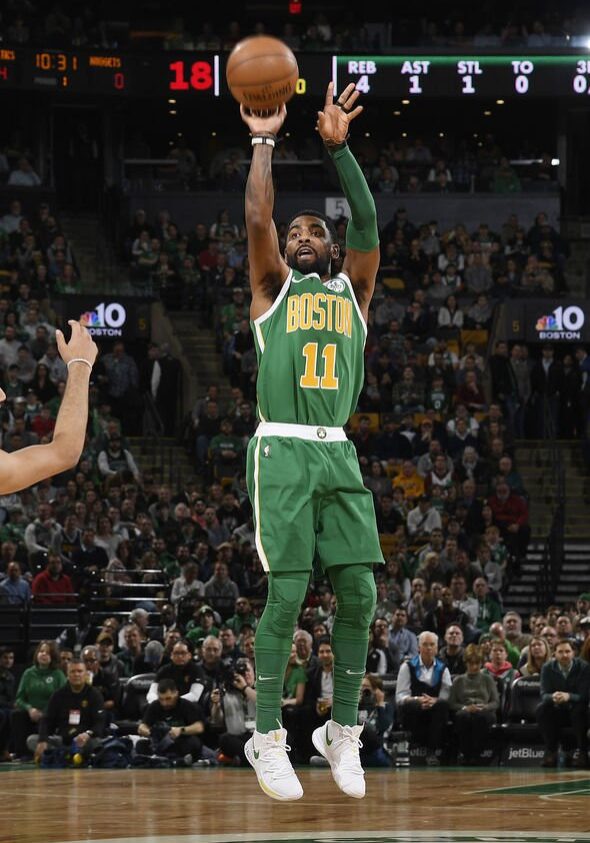
Kyrie Irving
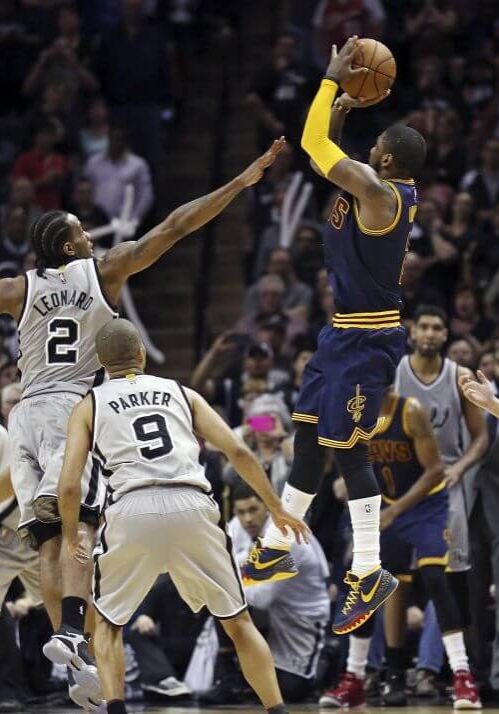
Kyrie Irving
How to Play Point Guard - Shoot First, Pass Preferred
Forcing access to the middle of the defense with an attacking and disruptive strongside penetration pull-up jump shot is the key to raising the point guard’s passing game to its highest level. The idea is that the threat of a high-percentage jump shot off attacking strongside penetration moves will cause disruptions of the defense that the point guard can convert into prime scoring opportunities with passes to teammates left unguarded close to the basket and at mid-range. Now, in order for the strongside penetration pull-up jump shot to fully dominate against intense mid-range and interior defenses, square-in-the-air capability is very much a critical requirement. That’s because only square-in-the-air capability can extend body-wedge protection of the basketball from the protective lateral dribble to on the way up throughout most of the jump of the jump shot, which is when the basketball is raised to the shooting position for the start of the release. Not just any type of jump shot can do the job. The whole-body elbow-out jump shot is perfect for attacking and disruptive point guard play. Other less than perfect point guard jump shot options are discussed and rated.

Walt Frazier

Tyrese Haliburton